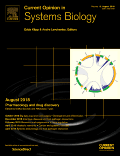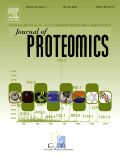
Molecular Omics
Scope & Guideline
Unlocking the Secrets of Molecular Mechanisms
Introduction
Aims and Scopes
- Integration of Omics Technologies:
The journal emphasizes the integration of multiple omics disciplines (genomics, proteomics, metabolomics, transcriptomics) to provide a comprehensive understanding of biological processes and systems. - Biomarker Discovery:
A significant focus is on identifying biomarkers for diseases, utilizing omics approaches to uncover potential diagnostic and therapeutic targets. - Systems Biology and Network Analysis:
Research articles often employ systems biology techniques, including network analysis, to explore the interactions and regulatory pathways at play in biological systems. - Environmental and Clinical Applications:
The journal covers studies with implications for clinical practice, environmental health, and personalized medicine, highlighting the relevance of omics in real-world applications. - Innovative Methodologies:
Molecular Omics showcases novel methodologies in omics research, such as machine learning applications, advanced mass spectrometry techniques, and data integration strategies.
Trending and Emerging
- Multi-Omics Integration:
There is a strong trend towards studies that integrate multiple omics layers (genomics, proteomics, metabolomics) to provide holistic insights into biological questions, particularly in areas like cancer research and metabolic diseases. - Machine Learning and AI Applications:
An increasing number of studies are leveraging machine learning and artificial intelligence to analyze complex omics data, enhancing predictive modeling and biomarker discovery. - Microbiome Research:
The exploration of the human microbiome and its interactions with host metabolism and health is a rapidly growing area, reflecting broader interest in personalized medicine and gut health. - Environmental Health and Toxicology:
Research focusing on the impact of environmental factors on health through omics approaches is emerging, particularly studies examining the effects of pollutants and lifestyle on metabolic pathways. - Host-Microbe Interactions:
Studies investigating the interplay between host biology and microbial communities, particularly in relation to diseases like cancer and metabolic disorders, are increasingly prominent in recent publications.
Declining or Waning
- Single-Omics Studies:
There is a noticeable decrease in publications focused solely on single-omics approaches, as the trend moves towards integrative methodologies that combine multiple omics layers. - Basic Mechanistic Studies:
Research that purely investigates basic mechanistic pathways without application to disease contexts or therapeutic implications appears to be waning, as the journal prioritizes studies with translational relevance. - Traditional Metabolomics:
While metabolomics remains a core area, traditional approaches that do not incorporate advanced analytical techniques or integrative frameworks are less frequently published. - Niche Plant and Environmental Studies:
Research focusing narrowly on specific plant metabolites or environmental samples without broader implications for human health or disease has declined, indicating a shift towards more impactful studies.
Similar Journals

COMPUTATIONAL BIOLOGY AND CHEMISTRY
Bridging Disciplines: Where Computational Biology Meets ChemistryCOMPUTATIONAL BIOLOGY AND CHEMISTRY is a distinguished academic journal published by Elsevier Science Ltd, focusing on the dynamic intersection of computational biology, biochemistry, and chemistry. With an ISSN of 1476-9271 and an E-ISSN of 1476-928X, this journal is committed to disseminating high-quality research that employs computational techniques to solve complex biological and chemical problems. As of 2023, the journal holds a substantial impact factor reflecting its significance and rigorous peer-review process, categorized in the Q2 quartile for both Computational Mathematics and Organic Chemistry, alongside Q3 classifications in Biochemistry and Structural Biology. With a continuous publication history spanning from 2003 to 2024, it serves as a critical resource for researchers, professionals, and students alike. The journal offers various open access options, ensuring that vital research findings are accessible to a global audience, further enhancing collaboration across disciplines. Engage with cutting-edge studies and contribute to the evolving landscape of computational methodologies in the life sciences through this esteemed publication.

Genome Medicine
Pioneering Innovations in Genomic MedicineGenome Medicine is a prestigious, peer-reviewed journal published by BMC, focusing on the rapidly evolving fields of genetics, molecular biology, and molecular medicine. Established in 2009 and boasting an open-access format, it has become a leading platform for disseminating high-quality research findings that advance our understanding of genetic diseases and therapeutic innovations. With an impressive Q1 ranking across multiple relevant categories—in particular, genetics (clinical), molecular biology, and molecular medicine—this journal is recognized for its substantial impact in the academic community, as evidenced by its exceptional placement in Scopus rankings. By providing unrestricted access to groundbreaking studies, Genome Medicine fosters collaboration and knowledge sharing among researchers, clinicians, and educators, thus playing a vital role in the transition from fundamental genetic research to clinical applications. Researchers are encouraged to contribute their findings and insights, further solidifying the journal’s position as a pivotal resource for those dedicated to advancing genomic medicine.

Quantitative Biology
Transforming Biological Research with Mathematical PrecisionQuantitative Biology is a prestigious journal published by WILEY, focusing on the interdisciplinary study of quantitative approaches in the biological sciences. With an ISSN of 2095-4689 and an E-ISSN of 2095-4697, this journal has established itself as a critical platform for researchers exploring complex biological systems through mathematical and computational methodologies. Operating out of China, Quantitative Biology significantly contributes to its field, holding a Q2 ranking in various categories, including Applied Mathematics and Biochemistry, Genetics and Molecular Biology, according to the latest Scopus rankings. These rankings reflect the journal's commitment to publishing high-quality research that employs advanced modeling and simulation techniques. The journal's impact is evident with its position in the 84th percentile for Applied Mathematics, indicating its relevance and growth in a competitive academic landscape. Although it does not currently operate under an Open Access model, the journal is pivotal for professionals and students alike, aiming to bridge the gap between mathematical theories and biological applications. Researchers are encouraged to submit their innovative findings and engage with the vibrant community dedicated to advancing the quantitative understanding of biological phenomena.

ACS Chemical Biology
Connecting Chemistry and Biology for a Healthier FutureACS Chemical Biology is a premier journal published by the American Chemical Society, dedicated to advancing the understanding of the chemical underpinnings of biological systems. With an ISSN of 1554-8929 and a distinguished track record since its inception in 2006, this journal provides a vital platform for the dissemination of high-quality research in the realms of biochemistry and molecular medicine, achieving a prestigious Q1 ranking in these categories as of 2023. In an era where interdisciplinary approaches are crucial, ACS Chemical Biology fosters collaboration among chemists and biologists, reflecting a steadfast commitment to exploring the chemical processes that govern life. Although it does not operate under an open-access model, the journal maintains a rigorous peer-review process, ensuring the publication of influential studies that shape the future of chemical biology. With an increasing impact factor and a focus on innovative research, ACS Chemical Biology remains an authoritative resource for researchers, professionals, and students eager to engage with cutting-edge findings in this dynamic field.

BIOCHIMICA ET BIOPHYSICA ACTA-MOLECULAR BASIS OF DISEASE
Unraveling the Molecular Mysteries of DiseaseBIOCHIMICA ET BIOPHYSICA ACTA-MOLECULAR BASIS OF DISEASE, published by Elsevier, is a pivotal journal in the fields of Molecular Biology and Molecular Medicine, recognized for its high impact factor and robust ranking within Scopus categories, holding prestigious quartiles in Q1 for both disciplines as of 2023. With ISSN 0925-4439 and E-ISSN 1879-260X, this journal fosters cutting-edge research from 1990 to 2025, addressing the critical molecular mechanisms underlying human diseases. Its wide-ranging scope includes original research articles, reviews, and advanced theoretical insights, serving as an essential resource for researchers, clinicians, and students alike. The journal is based in the Netherlands, at RADARWEG 29, 1043 NX AMSTERDAM, and while it does not currently offer an open-access option, it continues to maintain a strong presence in the scientific community, enhancing our understanding of molecular processes in health and disease.

Molecular Systems Biology
Unraveling the Mysteries of Molecular InteractionsMolecular Systems Biology, published by SpringerNature, is a premier open access journal that has been a cornerstone in advancing the fields of biological science since its inception in 2005. With its ISSN 1744-4292, this journal exemplifies high scholarly standards, boasting an impressive suite of impact factors, including Q1 rankings across various disciplines such as Agricultural and Biological Sciences, Biochemistry, Genetics and Molecular Biology, and more, highlighting its significant contribution to the scientific community. The journal offers robust access options to facilitate innovative research dissemination, reaching a global audience while maintaining a commitment to fostering collaboration and dialogue among researchers, professionals, and students. With a focus on integrating quantitative approaches to biological systems, Molecular Systems Biology plays a vital role in addressing complex biological questions, paving the way for groundbreaking discoveries and advancements in healthcare, environmental sustainability, and functional genomics.

Bioinformatics and Biology Insights
Fostering collaboration at the forefront of biological research.Bioinformatics and Biology Insights is a premier open-access journal dedicated to advancing the frontiers of bioinformatics and biology. Published by SAGE Publications Ltd, this journal is a leading platform for disseminating high-quality research that integrates computational methods with biological insights. Since its inception in 2007, the journal has garnered significant recognition, reflecting its commitment to excellence, as evidenced by its impressive impact factor and a strong presence across multiple quartiles in applied mathematics, biochemistry, and computational sciences. With a rank of Q1 in both Applied Mathematics and Computational Mathematics and various other notable rankings in related fields, it serves as an essential resource for researchers, professionals, and students seeking cutting-edge knowledge and innovations. The journal's open-access model ensures that findings are readily available, fostering collaboration and advancement in this dynamic field. Through its comprehensive scope and rigorous peer-review process, Bioinformatics and Biology Insights continues to play a pivotal role in shaping the future of biological research and computational methodologies.

Proteome Science
Unlocking the Secrets of Protein DynamicsProteome Science is an esteemed academic journal specializing in the field of proteomics, providing a platform for advanced research and discussions surrounding the structure, function, and dynamics of proteins in biological systems. Published by BMC, a reputable publisher recognized for its commitment to open-access publishing, Proteome Science has been disseminating pivotal research findings since its inception in 2003. Targeted towards researchers, professionals, and students in biochemistry and molecular biology, the journal aims to foster collaboration and innovation within the scientific community. While it currently holds a Q3 quartile ranking in both Biochemistry and Molecular Biology categories, its impactful contributions to the field are reflected in its accessibility, as evidenced by its open access policy. By embracing collaborative research methodologies and providing a platform for novel findings, Proteome Science plays a crucial role in advancing the understanding of proteomic analyses, catering to a global audience that values groundbreaking scientific discovery.

Current Opinion in Systems Biology
Advancing knowledge in the intricate world of systems biology.Current Opinion in Systems Biology is an esteemed academic journal published by ELSEVIER, focusing on the dynamic and interdisciplinary field of systems biology. Since its inception in 2017, the journal has made significant strides in disseminating cutting-edge research and innovative perspectives across various domains, including applied mathematics, biochemistry, and drug discovery. With an impressive impact factor reflecting its prominent position as a Q1 journal in multiple categories—including Applied Mathematics, Biochemistry, and Computer Science Applications—it serves as a vital resource for researchers, professionals, and students alike. The journal embraces a comprehensive approach to understanding complex biological systems, fostering a deeper insight into the interactions within biological and computational frameworks. This makes it an essential conduit for advancing knowledge and innovation in systems biology, facilitating the development of new methodologies that could lead to groundbreaking discoveries.

Journal of Proteomics
Advancing the frontiers of protein science.Journal of Proteomics, published by Elsevier, is an esteemed peer-reviewed journal dedicated to advancing research in the field of proteomics, with broad implications for biochemistry and biophysics. Established in 2008, the journal has continuously evolved, embracing innovative methodologies and technologies that facilitate protein analysis from a variety of biological systems. With its current standing in the Q2 category for both biochemistry and biophysics as of 2023, it is recognized as a significant contributor to scientific literature. The journal publishes original research articles, reviews, and methodological advancements, providing invaluable insights for researchers, professionals, and students alike. Although it does not offer open access, the journal remains a crucial platform for disseminating knowledge that informs various applications, ranging from drug development to disease understanding. As it converges towards 2024, the Journal of Proteomics continues to solidify its role in shaping the future of proteomic research through rigorous scientific inquiry and innovation.